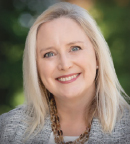Food insecurity, particularly as it affects cancer survivors, is a serious problem, according to a survey of oncology registered dietitian nutritionists (RDNs) published in the Journal of the Academy of Nutrition and Dietetics.1 “Despite these concerns, most oncology RDNs interviewed are not using a validated assessment tool to identify food insecurity or even regularly asking their patients about their food security,” the survey found.
“This lack of questioning provides evidence for the need to implement a standardized form of routine food insecurity screening in the oncology setting, as there are currently no explicit recommendations or guidelines to screen for food insecurity in oncology clinics using validated tools,” the authors noted. Several validated screening modules are available from the U.S. Department of Agriculture (USDA), and survey respondents expressed interest in receiving the Six-Item Short Form of the Food Security Survey Module.2
‘A Good Sign’
“It is a good sign that most of the dietitians showed interest in wanting the six-item screener, so they could start utilizing it in their clinics,” the study’s senior and corresponding author, Anna Arthur, MPH, PhD, RDN, said in an interview with The ASCO Post. Dr. Arthur is Assistant Professor at the University of Kansas Medical Center, Kansas City. The other authors are affiliated with the University of Illinois Urbana-Champaign, as was Dr. Arthur when the study was conducted.

Anna Arthur, MPH, PhD, RDN

Brenda Davis Koester, BS, MS
“Clearly, registered dietitians care very much about their patients and the food needs of their patients” and are interested in a tool “that can help identify these needs in their patients. That definitely emerged from our results,” study coauthor Brenda Davis Koester, BS, MS, told The ASCO Post. Ms. Koester is Associate Director of the Family Resiliency Center, a research and policy center based at the University of Illinois Urbana-Champaign.
“The quality of cancer survivors’ diet is essential to their overall health, quality of life, and survival,” Ms. Koester stated. “The inability to obtain adequate or nutritious food may lead to malnutrition and impact patients’ tolerance and response to oncology treatment, increasing their risks of cancer recurrence and mortality.”
Oncology Dietitians
Survey participants were recruited through the Academy of Nutrition and Dietetics Oncology Nutrition Dietetics Practice Group (DPG), open to registered dietitians who work with patients who have cancer, Dr. Arthur explained. A total of 41 oncology RDNs in various clinical settings across the United States participated.
These settings included both academic cancer centers and community cancer centers, independent outpatient cancer centers, a tribal health-care system, and a Veterans Administration Hospital. Most of the survey participants worked in an urban or suburban setting. Nutritional counseling could be provided on an inpatient or outpatient basis. The length of time the survey participants had been practicing as oncology RDNs ranged from 6 months to 20 years, with most practicing between 6 months and 5 years.
Lack of Access and Resources
For this study, “a cancer survivor is defined as anyone from the day of diagnosis of cancer until the day of death,” Ms. Koester explained. Food insecurity was defined by the survey participants as a lack of access to nutritious foods and a lack of resources to purchase nutritious foods. (The USDA defines food insecurity as “a lack of consistent access to enough food for an active, healthy life.” 3)
A single trained researcher, Stephanie Sloane, PhD, a study coauthor and research scientist at the Family Resiliency Center, “conducted all interviews to ensure consistency in data collection across participants,” the study authors noted. The interviews were conducted by telephone and lasted between 30 and 75 minutes, with an average of 49 minutes.
“Only 2 of 41 oncology RDNs said they use a validated tool, and an additional 4 oncology RDNs use an assessment tool but not one that is validated,” the researchers reported. “Some participants formally ask patients about their ability to afford the food they need most of the time, whereas some said they almost never ask patients about their access to food.”
Unexpected Life Events
As noted in the study report, unexpected life events, such as cancer, can lead to food insecurity, particularly among those with incomes hovering near the poverty line.
“Patients occasionally complain about not being able to follow recommendations because they do not have enough financial resources to do so, whereas one-third said it is rare for patients to complain about a lack of resources directly,” the survey found.
“How to broach this topic of financial challenges and food insecurity with our patients can be uncomfortable,” Dr. Arthur said. “Learning how to talk with patients about sensitive issues in general, and being culturally sensitive, is starting to be more widespread in our curricula across the United States for future dietitians.”

Amirah A. Burton-Obanla, MD. Photo by L. Brian Stauffer.
Besides financial concerns, major contributors cited for food insecurity among cancer survivors were lack of transportation and social/family support, as well as fatigue. “Oncology patients face a number of barriers and burdens that increase their risks of food insecurity and malnutrition,” said Amirah A. Burton-Obanla, MS, a graduate student in nutritional sciences at the University of Illinois Urbana-Champaign and the first author of the study. “They may be sick from the disease and treatment side effects. Many patients experience debilitating fatigue that prevents them from working and hinders their ability to follow dietary recommendations, prepare food, and eat.” 4
The Family Resiliency Center takes a “holistic, sociocultural approach, looking at the barriers from a lot of different ways,” Ms. Koester explained. “We know that even if individuals live alone, they are still part of a family. It might not be a genetic birth family. It might be a family of their own making, but they all have social networks. And those networks have implications for a myriad of things,” including meeting nutritional needs.
Food Security Strategies
“It doesn’t serve the end goal of connecting patients with food to just screen,” Ms. Koester said. “We also need to make sure that the registered dietitians are aware of resources and that they feel confident and have the self-efficacy to be able to connect their patients with those food resources.”
Among the strategies to enable cancer survivors to obtain the food they need are Meals on Wheels and other meal delivery services, food pantries, coupons, and connecting patients with social workers and financial counselors.
“There are two different forms of support to address food insecurity. Formal food assistance programs would be federally funded programs, such as SNAP or what we used to call the food stamp program. Informal food assistance would be food pantries, meal delivery services, or food coupons,” Ms. Koester explained.
Dealing With Side Effects
Among the dietitians surveyed, “by far the biggest concern regarding the health of patients had to do with side effects and feeling sick,” the researchers reported.
Oncology RDNs work to help patients with cancer “overcome the barriers they face during cancer treatment and their recovery period and potentially in the long term, because many patients with cancer have very serious symptoms and side effects and late effects years later,” Dr. Arthur noted. “That is one reason why this issue of food insecurity among patients with cancer is so complex, uniquely complex compared with other populations. It may not be that you just have to connect patients with cancer who are food insecure with food banks or SNAP benefits, like food stamps, and the problem is solved. Some patients need specialized liquid nutrition supplements. They may be on feeding tubes and need specialized formulas that are expensive, and insurance doesn’t always cover them,” Dr. Arthur explained.
“We need not just to make sure that these patients have food, but they have the type of food and nutrition supplements they need. Patients with head and neck cancer, and some patients with gastrointestinal cancer, are the most vulnerable nutritionally because they have a cancer that is impacting their digestive tract, or their mouth or throat, and are getting treatment for those areas, and are the patients that most often need a feeding tube.”
Multidisciplinary Approach
“Social workers are thought of as being the providers that help connect patients with the resources they need, whether it be financial or health resources,” Dr. Arthur said. “But as dietitians, we are the ones who are providing the nutrition counseling and care, and if patients can’t afford the food or food products that we try to encourage them to adopt during cancer treatment, and then the recovery period, then our interventions are not going to be successful. It takes multidisciplinary approach to address this, multiple providers working together to figure this out. It is important that different types of oncology health providers—including dietitians, social workers, nurse navigators, physicians, and others—become aware that food insecurity is a problem among patients with cancer. We may not know exactly the best way to manage it yet, but we can at least start identifying and making providers aware this is a problem,” Dr. Arthur stated.
“Our next planned step is to survey oncology physicians, social workers, and nurse navigators about their knowledge, attitudes, and practices about food insecurity among patients with cancer,” Dr. Arthur said. “How are these other types of health-care providers thinking about the problem, if they are thinking about it at all? If they are talking to their patients about food insecurity, how are they managing it, and how does each type of provider group think this problem could be tackled using a multidisciplinary team?”
Dr. Arthur also expressed interest in conducting research specifically focused on food-insecure patients’ recommendations on how health-care providers can better address food insecurity with them.
DISCLOSURE: Dr. Arthur, Ms. Koester, and Ms. Burton-Obanla reported no conflicts of interest.
REFERENCES
1. Burton-Obanla A, Sloane S, Koester B, et al: Oncology registered dietitian nutritionists’ knowledge, attitudes, and practices related to food insecurity among cancer survivors: A qualitative study. J Acad Nutr Diet. December 9, 2021 (early release online).
2. U.S. Department of Agriculture: Six-item short form of the food security survey module. Available at https://www.ers.usda.gov/media/8282/short2012.pdf. Accessed March 22, 2022.
3. Hunger + Health: What is food insecurity? Available at https://hungerandhealth.feedingamerica.org/understand-food-insecurity. Accessed April 28, 2022.
4. Forrest S: Oncology dietitians rarely ask cancer patients about food insecurity, study finds. Illinois News Bureau. Available at https://blogs.illinois.edu/view/6367/2082489580. Accessed March 22, 2022.

